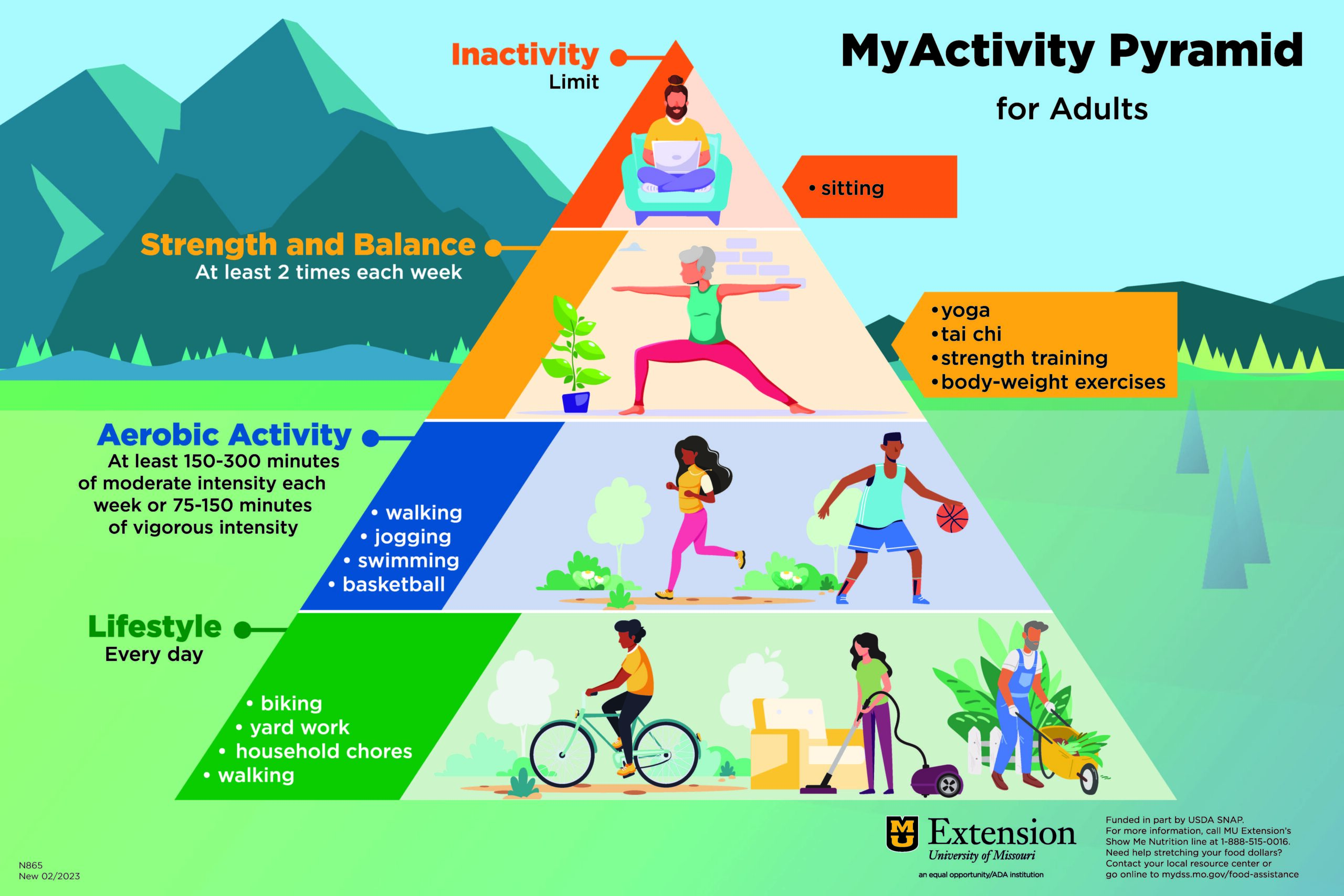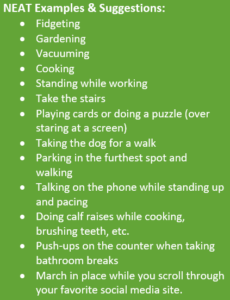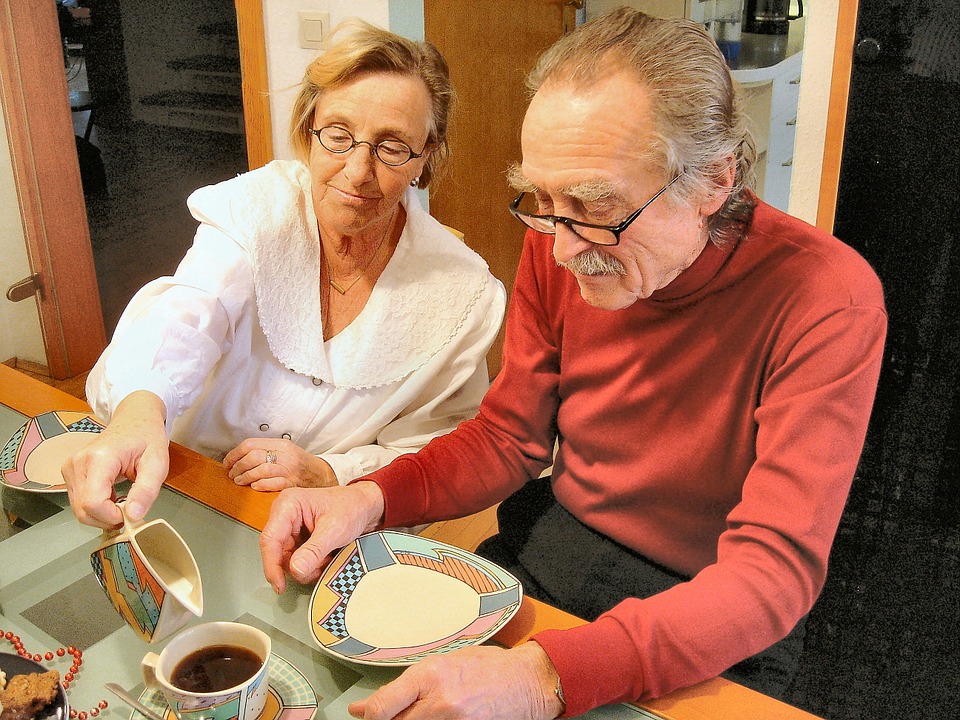
Physical Activity – How Much is Enough?
When you engage in regular physical activity, you reduce the risk of adverse health outcomes such as Type 2 diabetes, high blood pressure, osteoporosis, and heart disease. But do you know how much and what type of physical activity we need to obtain health benefits?
MyActivity Pyramid is based on the CDC’s Physical Activity Guidelines for Americans. These guidelines were developed by a group of experts utilizing years of physical activity research. They can help you set goals to improve your health and reduce the risk of chronic disease. Different types of activity are highlighted in the pyramid. Let’s take a look at the current recommendations, and examples of activities to help you understand how much is enough.
Lifestyle activities can include anything from yard work, to going to the grocery store or walking your dog. These activities should be done as often as possible. As such, it is important to pick activities you like and fit your lifestyle and schedule. Doing some physical activity is better than none, so if moderate intensity activity seems like too much – lifestyle activities can be a great place to start. Additionally, N.E.A.T. can be our friend in combating inactivity, helping us be aware of more lifestyle activity.
Aerobic Activity recommendations are performing at least 150 minutes of moderate intensity activities each week, or 75 minutes of vigorous intensity activities. Whether it is walking, running, or playing any sport, moderate intensity activity happens at a conversational pace (you can talk while you do it, but you can’t sing). On the other hand, during vigorous activity you would only be able to say a few words without stopping to catch your breath. A combination of moderate and vigorous activity is also ok if the weekly total meets the guidelines.
Strength and Balance training is recommended to occur at least twice a week. Strength training should consist of 1-3 sets of 8-12 repetitions and include all major muscle groups (chest, shoulders, back, core, legs, arms). For example, you could perform 10 squats (repetitions) three times (sets) to strengthen your leg muscles. Balance and flexibility activities should be performed at least two days each week for a minimum of 10 minutes each day.
Inactivity. When it comes to the top of the pyramid, limiting the amount of time you spend sitting is the best tool. The first step in knowing how much exercise we need, is realizing how much time we spend sitting. Easy ways to limit sedentary time include monitoring screen time and not sitting longer than 60 minutes at a time.
Additional Resources
N.E.A.T. Non-Exercise Activity Thermogenesis
Many individuals get caught up in exercise calorie burn or exercise energy expenditure, but a very important part of our day is N.E.A.T. This is non-exercises activity that contributes to total energy burn throughout the day. Choosing high N.E.A.T activities can add up the daily energy burn. For example, taking the stairs will contribute to more N.E.A.T calorie burn than taking the elevator. Even fidgeting will add a few more calories burned than just sitting still. Since lack of time is the most common barrier to meeting the recommended amount of physical activity, you can think about making your daily tasks N.E.A.T.. According to the Physical Activity Guidelines for Americans “Adults who sit less and do any amount of moderate-to-vigorous physical activity gain some health benefits”(2018). This means simply getting up more often can be a good addition to your daily routine. In addition, the guidelines state “muscle strengthening activities should be included as they provide additional benefits”. So, rise up and down on your toes while washing dishes, it’s better than nothing!

N.E.A.T. directly relates to sedentary behavior – which is a predictor of cardiovascular disease. In other words, simple movements such as the ones described, may play a role in our health. In addition, N.E.A.T. can also play a role in weight management. According to the American Council of Exercise, “Adding N.E.A.T. behaviors can increase daily caloric expenditure by as much as 350 calories per day and is particularly beneficial for obese individuals”. If your goal is to lose or maintain weight, N.E.A.T. is a great way to stay active without taking time away from your family, home, and responsibilities – it is perfect for those who find time is their worst enemy. Daily N.E.A.T. can be high or low, the choice is up to you!



